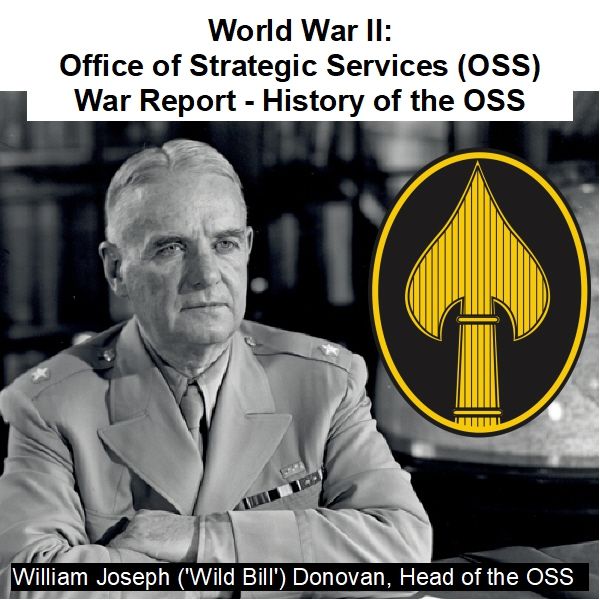
World War II: Office of Strategic Services (OSS) War Report – History of the OSS
$19.50
Description
OSS: Timeline, Figures, and Legacy
- 1942 (Pre-June 13): The Coordinator of Information (COI) agency is in operation, acting as a precursor to the OSS.
- June 13, 1942: The Coordinator of Information (COI) officially transitions and is renamed the Office of Strategic Services (OSS). William “Wild Bill” J. Donovan is the head of this newly formed organization.
- World War II (Throughout): The OSS conducts intelligence gathering and “unorthodox warfare” operations across various theaters, including Europe, Africa, Asia, and the Middle East. This includes training personnel in National Parks for dangerous missions behind enemy lines (spies, guerrilla leaders, saboteurs, radio operators).
- 1944: An OSS mission in Yugoslavia fails, as covered in a later scholarly conference.
- Post-WWII (Specific date not given, but after 1945): The “War Report, Office of Strategic Services (OSS)” (Volumes 1 & 2) is produced by the History Project, Strategic Services Unit, Office of the Assistant Secretary of War. The head of this project is Kermit Roosevelt Jr.
- 1947: The “Assessment of Men – Selection of Personnel for the Office of Strategic Services” report, detailing OSS personnel evaluation and selection processes, is created by the OSS Assessment Staff.
- 1949: The “War Report, Office of Strategic Services (OSS)” (Volumes 1 & 2) is completed. It remains classified “Top Secret” for 53 years.
- 1975: Thomas F. Troy completes “Donovan and the CIA: A History of the Establishment of the Central Intelligence Agency” for the CIA’s Center for the Study of Intelligence. The report covers the OSI/OSS period extensively and is initially classified SECRET.
- 1981: Thomas F. Troy’s “Donovan and the CIA” is declassified, with six pages removed. It is re-edited for accuracy and clarity, with additions from James Grafton Rogers’ unpublished diary.
- 1991 (July 11-12): The National Archives and Records Administration hosts the first major scholarly conference on the OSS, titled “The Secrets War: The Office of Strategic Services in World War II,” in Washington D.C. Presentations cover various aspects of OSS operations and legacy.
- 2002 (Approximately): The “War Report, Office of Strategic Services (OSS)” (Volumes 1 & 2), completed in 1949, is declassified after 53 years.
- 2008: The National Park Service produces “OSS Training in the National Parks and Service Abroad in World War II,” detailing the origins of the OSS and its use of National Parks for training.
- 2024: (Current year of the compilation) The listed publications are available.
Cast of Characters
- William “Wild Bill” J. Donovan: The head of the Office of Strategic Services (OSS) from its inception. He also wrote an introduction to the “War Report, Office of Strategic Services (OSS),” emphasizing the importance of intelligence and unorthodox warfare. Often credited with developing the concept of unorthodox warfare.
- Kermit Roosevelt Jr.: Grandson of the 26th U.S. President Theodore Roosevelt. He served as the head of the History Project, Strategic Services Unit, Office of the Assistant Secretary of War, which produced the “War Report, Office of Strategic Services (OSS)” in 1949.
- Thomas F. Troy: Author of the 1975 history “Donovan and the CIA: A History of the Establishment of the Central Intelligence Agency,” written for the CIA’s Center for the Study of Intelligence. He re-edited the report for its 1981 declassification.
- James Grafton Rogers: Mentioned as the author of an unpublished diary, from which “a score of lines” were added to Thomas F. Troy’s 1981 re-edited version of “Donovan and the CIA.”
- Walt W. Rostow: An economist who presented “The London Operation: Recollections of An Economist” at “The Secrets War” conference in 1991, sharing his recollections of the OSS London operation.
- Arthur Schlesinger, Jr.: A historian who presented “The London Operation: Recollections of a Historian” at “The Secrets War” conference in 1991, offering his historical perspective on the OSS London operation.
- Allen Dulles: Mentioned in the context of “From Hitler’s Doorstep: Allen Dulles and The Penetration of Germany,” indicating his significant role in OSS intelligence gathering and operations concerning Germany.
- William Colby: Presented “The Legacy of The OSS” at “The Secrets War” conference in 1991, likely discussing the long-term impact and influence of the OSS.
World War II: Office of Strategic Services (OSS) War Report – History of the OSS
This collection contains a total of 3,421 pages. All computer recognizable text, transcriptions, reproduced printed text, and description sheets in the collection are searchable.
The Office of Strategic Services (OSS) is often called America’s first intelligence agency or the predecessor of the CIA.
Office of Strategic Services (OSS) War Report Volumes 1 & 2
915 pages in two volumes covering the history of the Office of Strategic Services (OSS) during World War II produced in 1949 by the History Project, Strategic Services Unit, Office of the Assistant Secretary of War, War Department, Washington, D. C. The formal title of the report is War Report, Office of Strategic Services (OSS), it is also known as OSS War Report, Washington Organization, and Operations in the Field. These two volumes remained classified “Top Secret” for 53 years after they were completed. The head of this history project was Kermit Roosevelt Jr., the grandson of Theodore Roosevelt, the 26th President of the United States.
Volume 1 covers the organization of the OSS. Volume 2 covers OSS coordinated operations in the field.
Volume 1 summarizes activities in Washington D.C. and the transformation of Coordinator of Information (COI) into the OSS. On June 13, 1942, the COI became the Office of Strategic Services (OSS). Volume 2 covers OSS activity in Europe, Africa, Asia, and the Middle East.
In an introduction to the report the head of the OSS, William “Wild Bill” J. Donovan wrote:
“I feel that this War Report presents a well-rounded study of the first comprehensive organization for intelligence and unorthodox warfare in the history of the United States. I only regret that limitations of time prevented a fuller recording of OSS operations and experience.
The importance of OSS lies not only in its role in hastening military victory, but also in the development of the concept of unorthodox warfare which alone constitutes a major contribution.
Of even farther reaching importance are the lessons learned and the contributions made to the future of American defense and foreign policy.
The experience of OSS showed above all how essential it is for winning the war and keeping the peace to base national policy upon accurate and complete intelligence. Unorthodox warfare is now recognized as a vital part of our defense system.”
Additional Material in this collection covering the history of the OSS includes:
National Archives’ The Secrets War: The Office of Strategic Services in World War II
A 400-page history of the OSS compiled by the National Archives and Records Administration in 1991, of presentations presented at the conference, “The Secrets War: The Office of Strategic Services in World War II,” which was held on
July 11 and 12, 1991, at the National Archives in Washington D.C. It was the first major scholarly conference on the OSS.
The twenty-four presentations include:
The OSS and The Development of The Research and Analysis Branch
The London Operation: Recollections of An Economist by Walt W. Rostow
The London Operation: Recollections of a Historian by Arthur Schlesinger, Jr.
Research In OSS Records: One Historian’s Concerns
The OSS and the Italian Campaign
Failure of a Mission: In Yugoslavia, 1944
From Hitler’s Doorstep: Allen Dulles and The Penetration of Germany
The Legacy of The OSS By William Colby
Assessment of Men – Selection of Personnel for the Office of Strategic Services written by the OSS Assessment Staff
A 565-page report created by the OSS Assessment Staff in 1947 detailing the process in which OSS personnel were evaluated and selected.
OSS Training in the National Parks and Service Abroad in World War II
A 712-page report produced in 2008 by the National Park Service covering the origins of the OSS and its use of National Parks for training and organization.
Chapter headings include:
“Wild Bill” Donovan and the Origins of the OSS
A Wartime Organization for Unconventional Warfare
Converting Catoctin Mountain Park into Military Camps
Instructing for Dangerous Missions
Daily Life in Camp, Park and Town
OSS in Action: Mediterranean and European Theaters
OSS in Action: The Pacific and the Far East
Abstract: Because of the secrecy that enveloped the U.S. Office of Strategic Services in World War II, it surprises most people, including nearby residents, to learn that spies were trained in some of the National Parks—not just spies but guerrilla leaders, saboteurs, clandestine radio operators and others who would be infiltrated behind enemy lines.
CIA Files
807 pages of CIA material covering the OSS and the early days of the CIA.
A highlight among these documents is a 626-page history produced in 1975 by the CIA’s Center for the Study of Intelligence, titled, “Donovan and the CIA: A History of the Establishment of the Central Intelligence Agency.“
This history was written for CIA employees, especially those new to the Agency, to give them a comprehensive and detailed account of the Agency’s origin. It was completed in 1975, and classified SECRET. Six pages were removed, and it was declassified in 1981. Two-thirds of the material cover the OSI/OSS period. In the preface to the 1981 release its author, Thomas F. Troy, wrote:
“It has, of course, been re-edited. For reasons of accuracy and clarity, and because of changes in judgment, I have added or deleted some words, phrases, and a sentence or two in the text. I have been permitted by the family of the late James Grafton Rogers to add a score of lines from his unpublished diary. I have not felt it necessary to revise or rewrite this history, although I know it would read differently here and there if it had been written at the end, rather than the beginning, of the last several years of accusations, revelations, investigations, and reforms that have centered on the CIA and American intelligence generally. The work has not otherwise been revised. There are, consequently, three matters which particularly need updating here as a result of additional research or recent developments.”
Related products
-
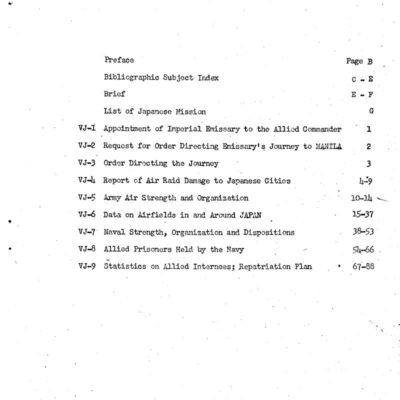
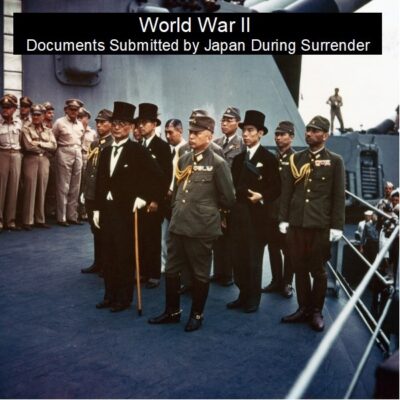
Japan’s Surrender Documents from World War II
$1.99 Add to Cart -
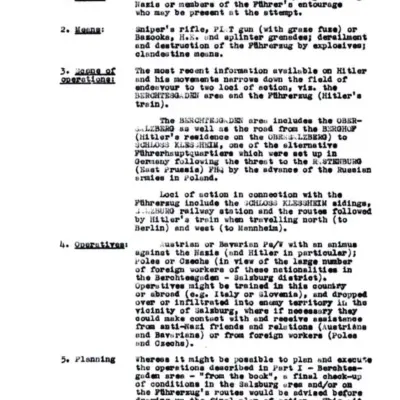
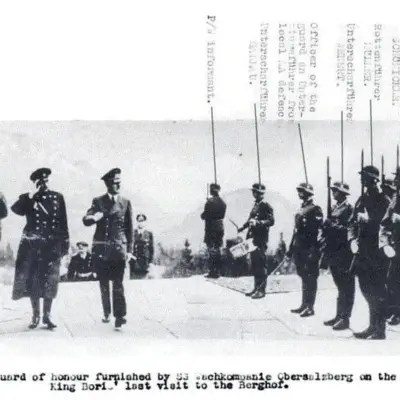
World War II: Adolf Hitler and Operation Foxley – British Assassination Plot
$19.50 Add to Cart -
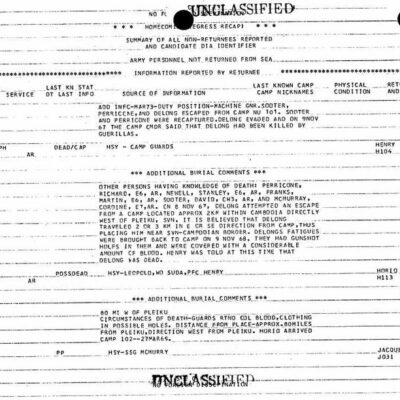
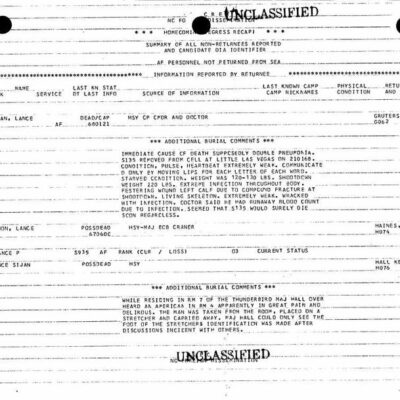
Vietnam War: POW/MIA Summary of All Reported Non-Returnees
$19.50 Add to Cart -
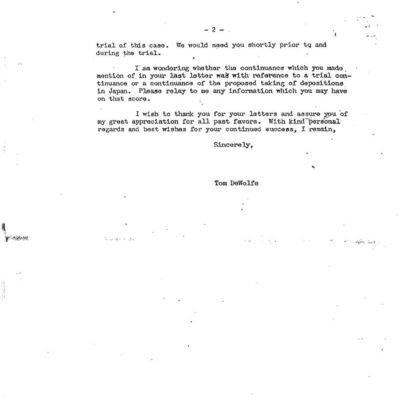
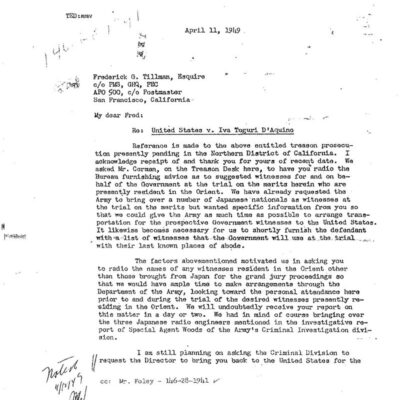
Tokyo Rose: Department of Justice Prosecution Files
$19.50 Add to Cart